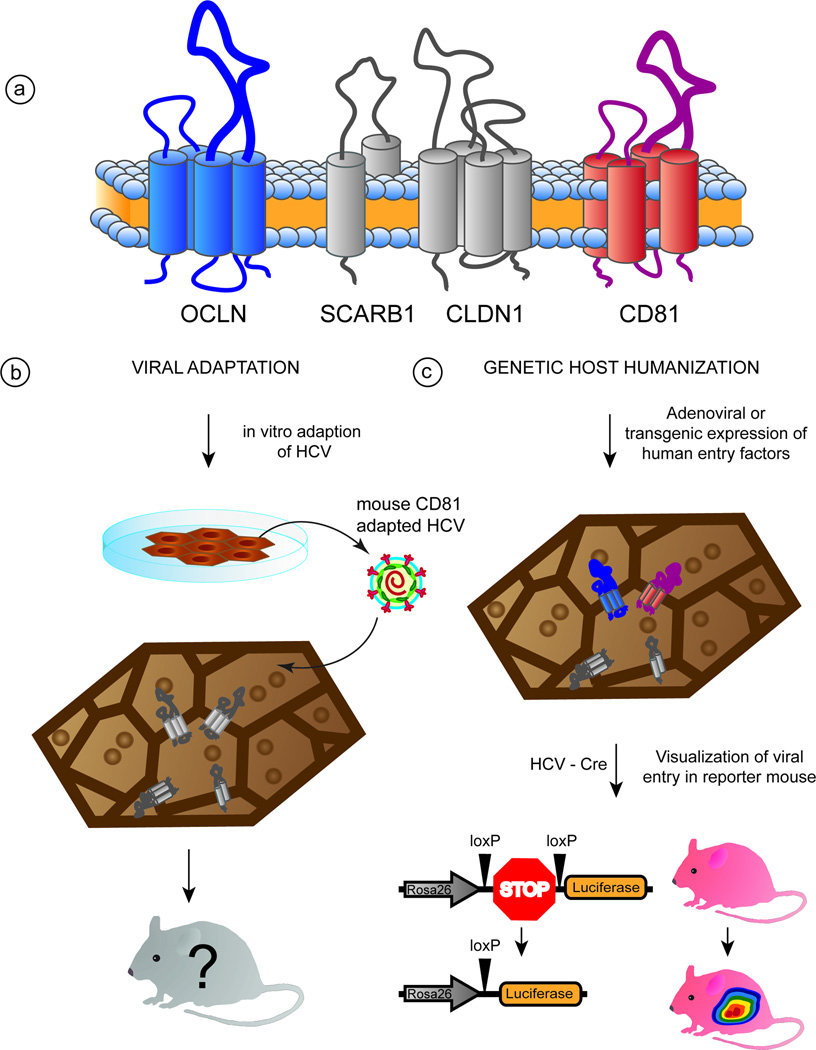Figure 2.
Approaches to overcome species-specific blocks of HCV entry and in vivo visualization of HCV entry. (a) The second extracellular loops of OCLN (blue) and CD81 (red) are responsible for the species tropism of viral entry. (b) Genetic viral and host adaptation approaches. Mouse CD81-adapted HCV can enter mouse cell lines expressing mouse orthologues of CD81 and OCLN. (c) Transgenic or adenoviral expression of human HCV entry factors facilitates HCV entry into mouse cells in vitro and in vivo. HCV uptake can be visualized in vivo using a cellularly encoded reporter that is activated by HCV expressing Cre-recombinase (HCV-Cre).

